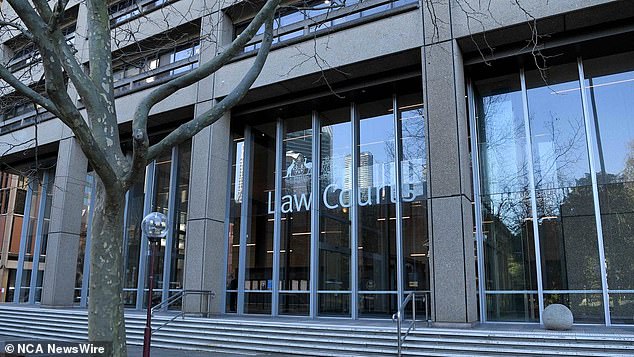Fairvale High School student is awarded $1.2million after ‘appalling’ act left him too afraid to catch the bus on his own
- High school student beaten by twelve of his peers
- He was paid $1.2 million for the attack
A former Sydney student has been awarded $1.2 million in damages after he was assaulted by 12 students in what has been described as a “horrendous” attack.
The student, who cannot be named because he was only 14 at the time of the 2017 attack, had attended Fairvale High School in Sydney’s west.
He was waiting for a bus on October 16, 2017, when he was told that another student – named XY in a published Supreme Court judgment – wanted to speak to him.
After indicating that he did not want to talk to the other student, he had tried to seek help in the school between 3:26 and 4:00 p.m., but no one was inside.
When he returned to the bus stop, the young boy was led to a park where he was attacked by twelve students.
The now 21-year-old student has sued the state of NSW through his mother over claims the school failed in its duty of care by failing to monitor students at the bus stop outside office hours.
His mother had twice tried to call the school after her son contacted her to say he was about to be ‘beaten’, but she was twice directed to an answering machine, according to the High Court ruling.
Footage from the students’ phones showed the boy being speared from behind before being kicked and punched, and his head and other body parts stamped on as he lay on the ground.
A former Sydney student has been awarded $1.2 million in damages after he was assaulted by 12 students in what has been described as a ‘terrible’ attack
The footage was later uploaded to Instagram, with court documents describing it as ‘very disturbing viewing’.
‘(The student) lies limp on the ground and screams. One of the students was recorded “taking a damn oath, boy, eshay” as the attack continues to escalate,” the published verdict said.
Photos of the student after the attack show his ear was bleeding, with an area ‘between the back of his ear to his hairline’ red with some ‘it looks as if it has been trampled because it looks like stains on the sole of a shoe.”
He had to undergo ear surgery and suffered psychological damage from the attack, among other injuries.
The student had previously been diagnosed with autism spectrum disorder in 2012, but the published judgment states that his ‘level of ASD worsened’ after the attack, leading to a ‘decreased quality of life’.
‘He could no longer go to school. Even though he was transferred to another school, (the student) could no longer catch the bus independently,” the published judgment said.
Judge Ian Harrison said the student “might have been able to live independently before the attack, but he will find it difficult to do so unsupervised now” after the attack, which Judge Harrison said was “horrendous”.

Judge Harrison found there were no teachers on bus duty who could have intervened in the attack, while the instigator of the attack – XY – had also recently returned from suspension
Judge Harrison found there were no teachers on the bus who could have intervened in the attack, while the instigator of the attack – XY – had also recently returned from suspension.
“The school breached its duty of care by failing to carry out a proper risk assessment of the instigating student before allowing him to return to the school following a suspension for previous violence,” the published judgment said.
“There were no teachers on bus service to deter misbehavior or intervene when (the student) was escorted away from the school.
“The school’s administration office was closed to such an extent that (the student) could not seek refuge from staff if he tried to do so.
“Each of these omissions or a combination of them constituted a factual causal link because they enabled the attack on (the student) to proceed in the manner in which it did and were a necessary condition for the attack to occur.
‘The seriousness and multitude of the infringements justify the establishment of a legal causal link. They were contrary to a primary task of the school: the safety of the students.’
Judge Harrison awarded the student $1.2 million in compensation for non-economic loss, future economic loss, past out-of-pocket expenses, future medical expenses, past attendant care, future attendant care, and the costs of future fund management .
